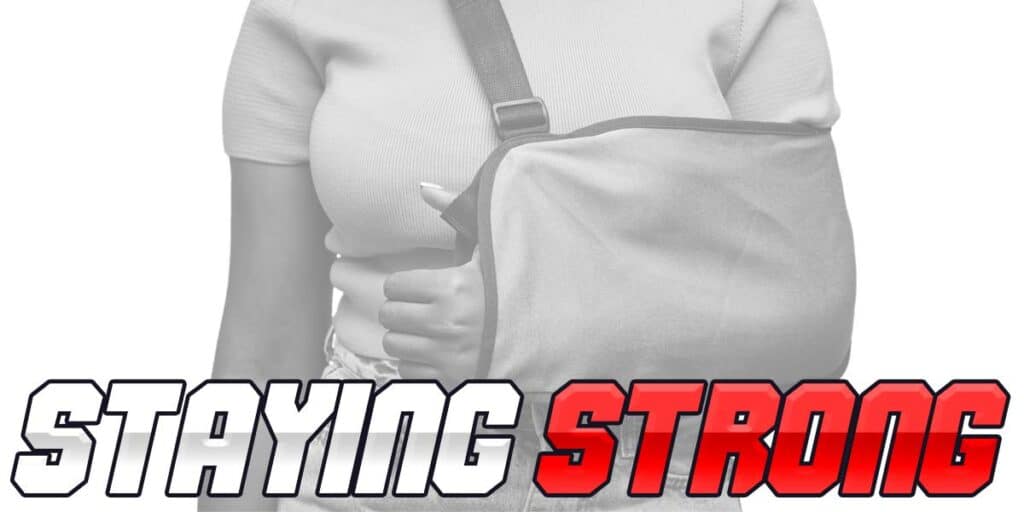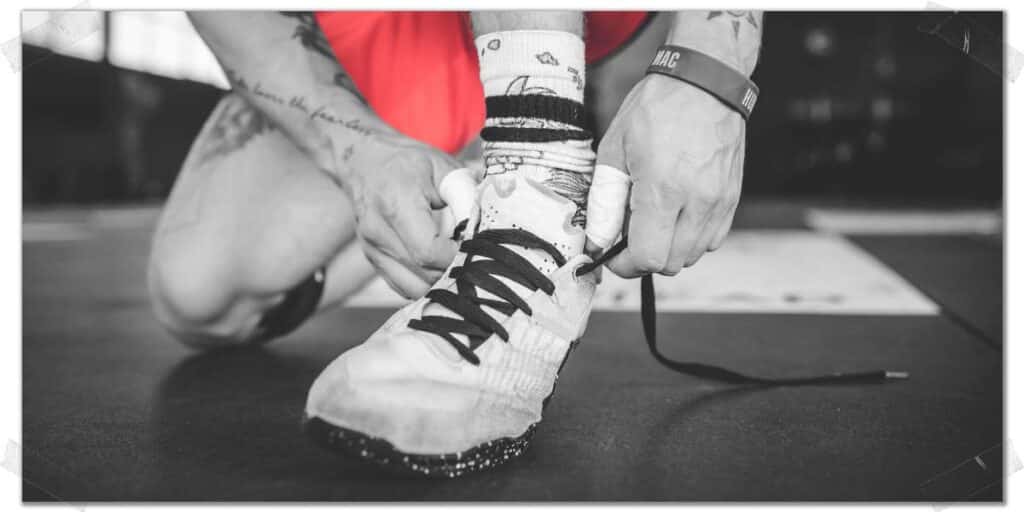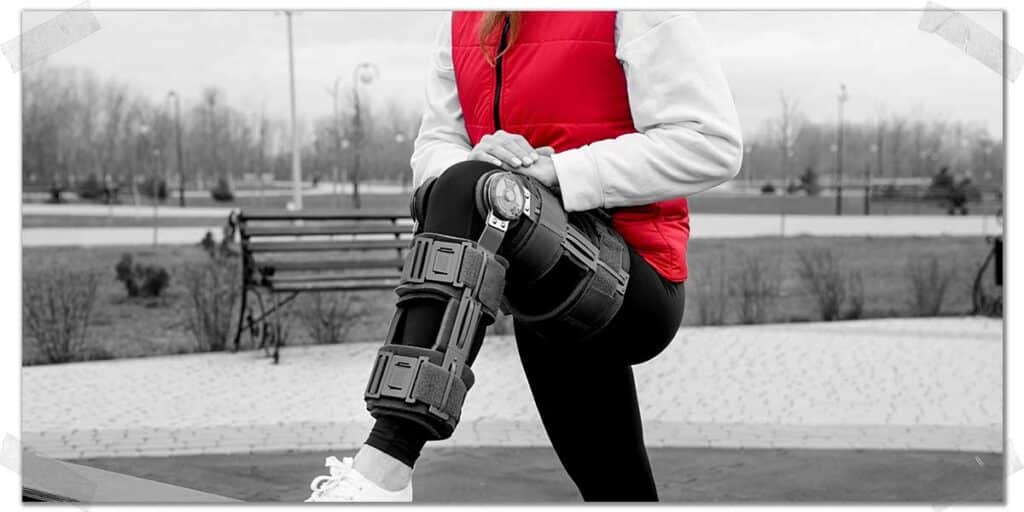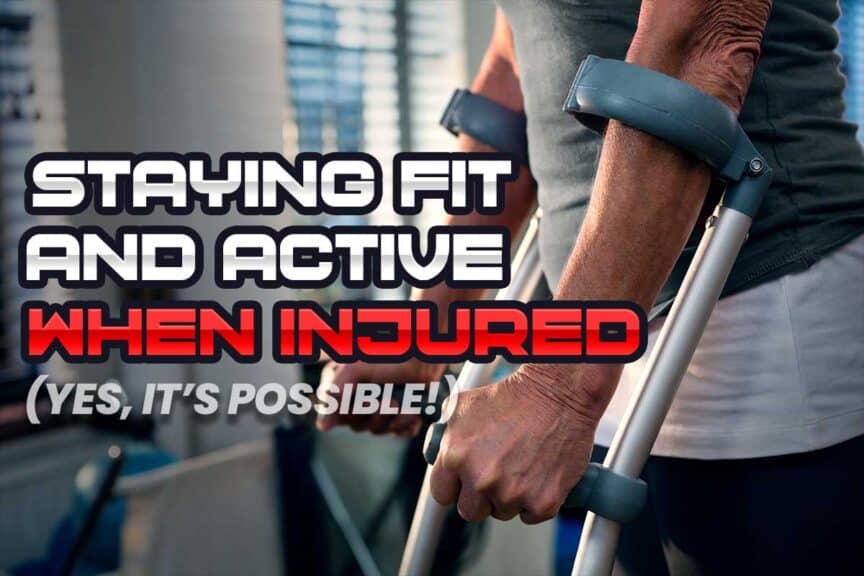Life can feel like enough of an uphill battle at the best of times. If staying fit, active, and healthy is important to you, that up-sloping challenge can feel like it gets exceptionally steep exceptionally quick when you throw an injury into the mix. Injuries can feel like they leave us powerless to stay active, but with the right mindset and tactics, you can keep yourself moving forward in ways that keep your health and fitness from imploding.
In this article, I’ll show you how to do exactly that by discussing the importance of mentally re-framing your situation, finding movements and activities that your body tolerates, and how to make the lifestyle changes necessary to support your health and fitness in the process.
Ultimately, you can stay fit and active through injury by utilizing mental and physical tactics that keep your spirits uplifted and your body moving in appropriate ways. The right outlook and the right therapeutic movements will keep your mind and body healthy and hasten the recovery process.
So, let’s get into it!

A small request: If you find this article to be helpful, or you appreciate any of the content on my site, please consider sharing it on social media and with your friends to help spread the word—it’s truly appreciated!
Mental recalibration: The starting point when injured

A strong body is nothing without a sound mind to control it. So, before I start talking about how to keep yourself moving and active while working through your injury, we must tap into and re-calibrate your control center. Once I take you through the short discussion on why this matters, the following sections within this article will be much more intuitive. In turn, you’ll get better results when it comes to staying active.
There are two components to quickly address from the mental side of things. Both are scientifically proven concepts to help those going through challenging times. I won’t get into the fine details within this blog post, but if you want an entire article devoted to these concepts (and how to stay mentally strong through an injury), stay tuned for my upcoming post: Mental Toughness: Finding Inner Strength After Injury (Science-backed), where I’ll break down these scientifically-proven concepts in much greater detail.
Develop a sense of awareness
I’ve had my fair share of mental health battles over the years AND my fair share of physical injuries. I know all too well that it’s incredibly easy to let thoughts spiral out of control, become toxic, and have them repeatedly playing on autopilot day in and day out.
A couple of years ago, I came across Dr. Caroline Leaf’s Neurocycle routine, which helps to clean up toxic and negative thinking, which has been an absolute GAME-CHANGER for me. After all, a strong body is nothing without a sound mind to control it.
Dr. Leaf, who is a clinical neuropsychologist, attributes the gathering of awareness with our thoughts, feelings, behaviours, perspectives, emotional state, and physical warning signs to that of gathering apples into a basket. By gathering these “apples” (which act as warning signals), we allow ourselves to not only validate what or how we’re feeling but also to take the first steps towards initiating helpful thoughts and feelings that keep us moving in the right direction while protecting our mental health.
Gathering awareness is the first step in her Neurocycle program, and again, for me, I can’t stress enough how much I appreciate this sequence of mental health steps that work to keep the mind in a healthy state.
“A strong body is nothing without a sound mind to control it.”
Retain a sense of control
Retaining a sense of control over some aspect of an unfavourable situation (such as physical injury) is EVERYTHING when it comes to finding a way to move forward with your goals and objectives.
Without a sense of control, you’re dead in the water—you have no sail or rudder to steer you along toward your goals, and you are left to be helplessly floating in a sea that now dictates your fate.
It’s by no means easy, but looking for aspects in which you have—or can take—control of your situation can be profoundly helpful for feeling empowered. It’s easier to take action when you see a path forward filled with actions on your own terms.
Pro tip: Not only will finding ways to stay physically active will help you feel like you’ve got power over your situation, but it will also help keep your mind from dwelling and fixating on your injury!
As such, if you’re serious about staying in shape and continuing with your fitness pursuits while injured, I would advocate that you start by taking time to ask yourself what you can control as you move forward in what is likely a less-than-ideal situation.
Questions I might ask myself in these types of situations include:
- What parts of my body can I still move, train, or work on as I deal with my injury?
- What types of physical activities, training styles, and exercises can I still perform, either for the injured area or the rest of my body?
- What actions can I take with my diet to ensure I give my body what it needs as I let my injury heal?
- In what ways can I use this as an opportunity to devote more time to other aspects of my health and wellness (prioritize learning new fitness information, ensure I get adequate sleep, focus on learning more about my condition, etc.)?
- Who can I enlist to help me move forward at a quicker rate of recovery or help to keep me on track with my health and fitness goals (a physical therapy colleague, my counsellor, dietician, etc.)?
By taking the time to ask myself what I might need to perform, incorporate, or actions I’ll need to take, I am arming myself with a tangible path toward and a renewed sense of control over my injury that I feel might be holding me back from my strength training and active lifestyle pursuits.
It’s an ongoing process, so be sure to continually ask yourself these questions so you can refine and optimize all aspects of control as you work towards overcoming your injury or condition.
So, with a renewed sense of control in place, I can then move forward with my training, and so can you.
Uninjured areas: Train what still works

Depending on the location and extent of your injury, there’s a high likelihood that there are still ways for you to move and challenge yourself. To be clear: it can be tricky to do, particularly with injuries to your lower back, but it should still be doable.
This gets even easier if your injury is to one of your extremities (ankle, shoulder, knee, elbow, etc.). Again, to be clear, it may not be enjoyable, but the fact is that if you only have a busted shoulder, you’ve still got two healthy legs. The same goes for having a busted knee but two healthy arms.
Essentially, you need to take what’s still healthy and find ways to challenge those body parts. Not only will it keep your physical strength and endurance from regressing in those areas, but it will also ensure you keep your cardiovascular health from regressing as well.
A true story: I have a friend who, years ago, tore his biceps tendon in his arm while kickboxing and had to get it surgically repaired. He wasn’t allowed to return to full striking (punching) with that arm for an entire year as he worked to rehab it back to full health. So, he spent the entire year devoting himself to training his lower body striking abilities. Not only did it keep his strength and fitness up, but to this day, his coach says that he kicks faster and harder in his forties than some of his professional fighters in their twenties!
So, if you’ve got a shoulder in a sling, you can still walk on the treadmill, perform seated leg extensions, seated hamstring curls, etc. It may not be your preferred way to train and stay active, but it is infinitely better than nothing—both for your body and your mind.
Conversely, if your leg is busted up, sitting in a chair or on a workout bench and performing upper body exercises is still likely possible for you. Should you have access to a gym, this only gets easier since you’ll have access to various pieces of upper body equipment.
Pro tip: An upper body ergometer (an arm bike) is your best friend. Just like a bike, you can select a resistance and intensity to cycle your arms at, providing a way to help maintain your cardiovascular fitness and keep your upper body endurance from regressing.
Modification: Train around, not through

This strategy may sound similar to the previous tip where I talked about training other, non-injured areas, but it’s distinctly different; the previous strategy was about training by staying away from the injured area altogether—this tip is about challenging the injured area (if appropriate to do so!) with movements, activities, and exercises it can still tolerate.
If you’re anything like the younger version of myself, you might find yourself just wanting to “push through” your injury and keep moving, exercising, and working out as you normally would while putting up with the pain along the way. Don’t do this; trust me, it won’t get you anywhere (ask me how I know, haha). It’s ok to modify activities in ways that allow you to stay moving while keeping your pain at bay (and it can often be very therapeutic for the body).
When you’re in pain, your body typically can’t do the exact physical tasks, activities, and exercises that it otherwise could if you weren’t injured. Still, it may just be that your body can still tolerate certain positions or movements, albeit at a reduced intensity, frequency, or volume.
RELATED CONTENT:
Dealing with an injury can often be about troubleshooting, and one of the most prominent troubleshooting tasks involves finding movements and activities that your body can still adequately tolerate. Obviously, it will depend on the type and extent of injury you’re up against, but it’s worth taking the time to explore and experiment with the exercises, movements, and subsequent parameters of what your body can still deal with. Just be sure to get a qualified healthcare professional to help you out in this process if you’re not sure what’s best for you as you do so.
As an example: If your back is sore, you might not be able to go run on the treadmill or perform a bunch of heavy deadlifts, but perhaps you can still walk, ride a bike, or climb some stairs.
Sitting still for days and days on end is rarely ever the answer for recovery, and it’s especially true if you’re looking for ways to maintain your physicality as you work to get back to healthy, pain-free movement.
Fuel sources: Adjust accordingly

Most injuries–particularly those of a more involved nature or significant extent—limit our overall daily energy expenditure, particularly full-body or lower-body injuries. After all, if you can’t move as much as you normally would or be as physically active as you’d like to be, you won’t burn as much energy.
With this in mind, if you’re committed to keeping your health and fitness as optimal as possible, you’ll need to consider modifying your daily caloric intake.
Regarding caloric consumption: there are two considerations you’ll need to make when making changes:
- How many calories you’re consuming daily
- The macronutrient source of those calories
Let’s break it down a bit more.
Consideration 1: Altering your overall caloric consumption
A constant surplus (overconsumption) of your daily caloric needs will lead to weight gain. This may not be a big deal if your movement and physical activity abilities are only hampered for a couple of days, but for those who will need weeks or months to return to regular or near-regular activity levels, overconsuming even just 10% of your daily caloric needs for bodyweight maintenance can lead to noticeable weight gain.
More concisely put: When wanting to stay fit when injured, if you’re not moving as much as you normally would, you probably shouldn’t eat as much as you normally would.
As such, if you want to maintain your current body weight and composition, you’ll need to consider dialling back your daily food consumption. How much you dial it back will depend on how much your physical activity levels drop, and there’s more to the story than just reducing caloric intake; you also need to consider where those calories are coming from, which I’ll discuss in the following consideration.
Consideration 2: Macronutrient sources & adjustments
There are three types of fuel sources our body can use for energy (known as macronutrients). These macronutrients are:
- Carbohydrates (4 calories per gram)
- Proteins (4 calories per gram)
- Fats (9 calories per gram)
Each macronutrient carries a specific amount of calories (a calorie is a measurement of energy). Our body uses this energy to keep us alive and provide us with the energy required for moving. But these calories don’t tell the whole story; an intake of 2000 calories per day from purely fat is very different than an intake of 2500 calories coming from a healthy blend of carbohydrates, fats and proteins.
Fun fact: Alcohol actually provides 7 calories per gram but does not have the same nutritious value as the other three macronutrients do.
While I’m not writing this article to provide you with dietary advice, here are some critical concepts to keep in mind:
- The body will break down, use, and store each macronutrient in an oxidative hierarchy, meaning it prioritizes the order in which it breaks down and utilizes them based on its capacity to store excess amounts.
- The body doesn’t have the same storage capacity with protein as it does with fats and carbohydrates, so if you’re looking to avoid gaining weight, upping your protein intake over carbohydrates or fats might be helpful.
- When dealing with notable bodily injury, the body typically requires higher levels of protein intake to have the “building blocks” required to assemble new, healthy tissue.
- Protein is much more satiating than fats and carbohydrates, meaning it keeps you feeling fuller for longer. This is due to the rate at which the body can break down protein, which is much slower than when breaking down carbohydrates and fats.
- Lower carbohydrate intake levels might be ideal for those who are injured since the individual isn’t moving around nearly as much. Carbohydrates act as a much more fast-acting and readily available fuel source. Excess carbohydrates can easily be converted by the body into fat.
Final thoughts
It can be a tricky issue to navigate, but staying fit and healthy when you’re injured is doable. Depending on the nature and severity of your injury, you may not be able to stay as fit and healthy as you want. Still, even in these more extreme situations, there are many strategies you can implement to minimize any regression or loss of your fitness.
Hang tough and keep your head up. This may not be an easy time for you to get through (physically, emotionally, or both), but I believe you can craft a comeback story from this that will only make you an overall stronger individual in the end and one who can inspire others by sharing your comeback story with them.
Frequently Asked Questions
To help my readers out as much as possible, I’ve included a few brief answers to similar questions other individuals often have about exercising and staying fit when dealing with injuries. I hope these brief answers are helpful to you!

Hi! I’m Jim Wittstrom, PT, DPT, CSCS, Pn1.
I am a physical therapist who is passionate about all things pertaining to strength & conditioning, human movement, injury prevention and rehabilitation. I created StrengthResurgence.com in order to help others become stronger and healthier. I also love helping aspiring students and therapists fulfill their dreams of becoming successful in school and within their clinical PT practice. Thanks for checking out my site!

